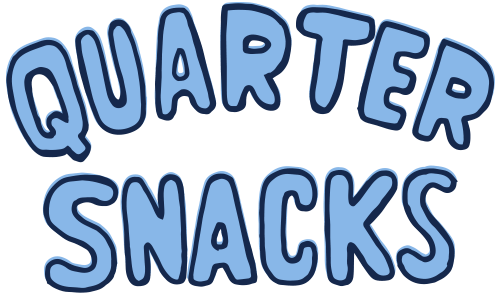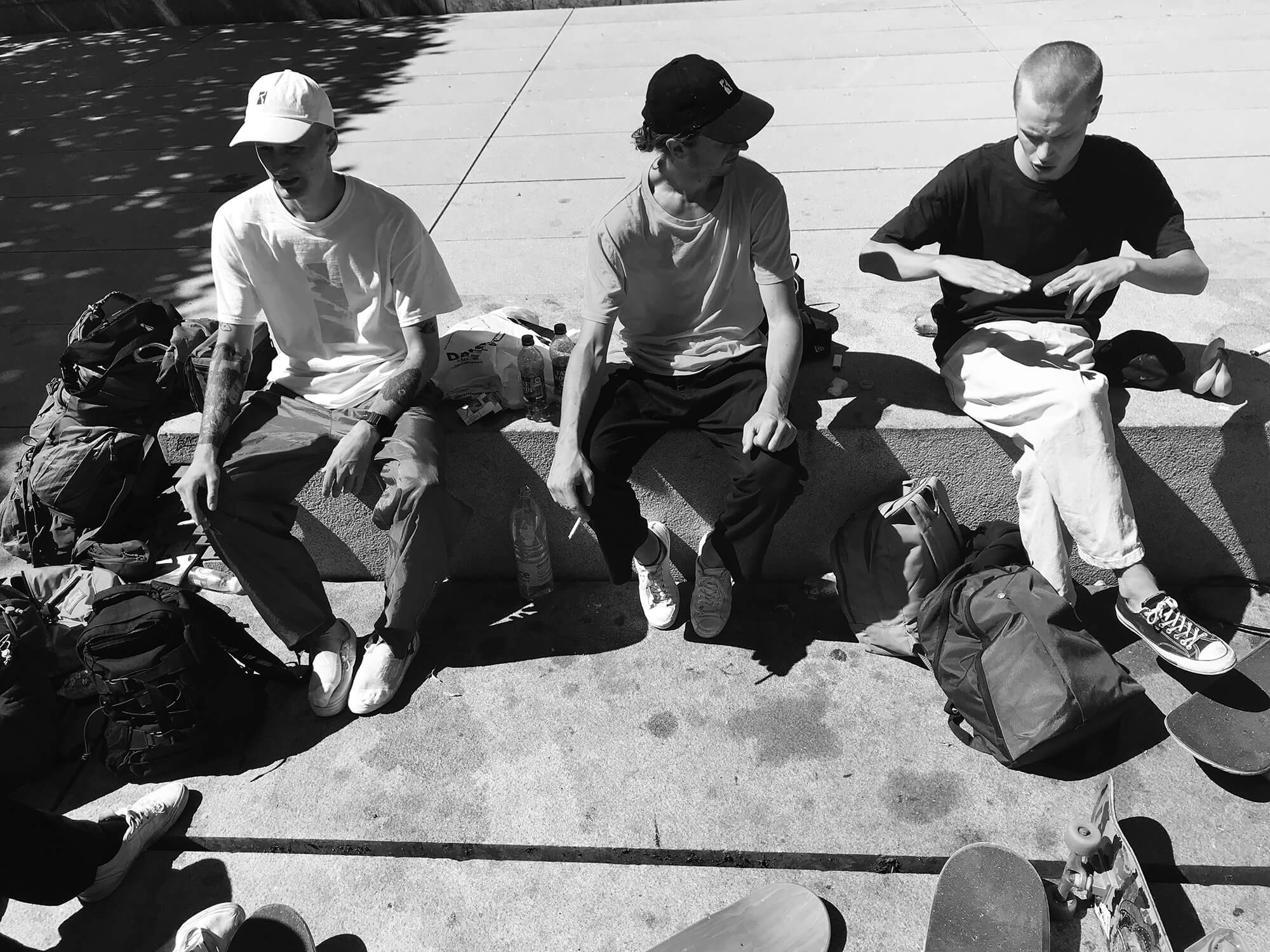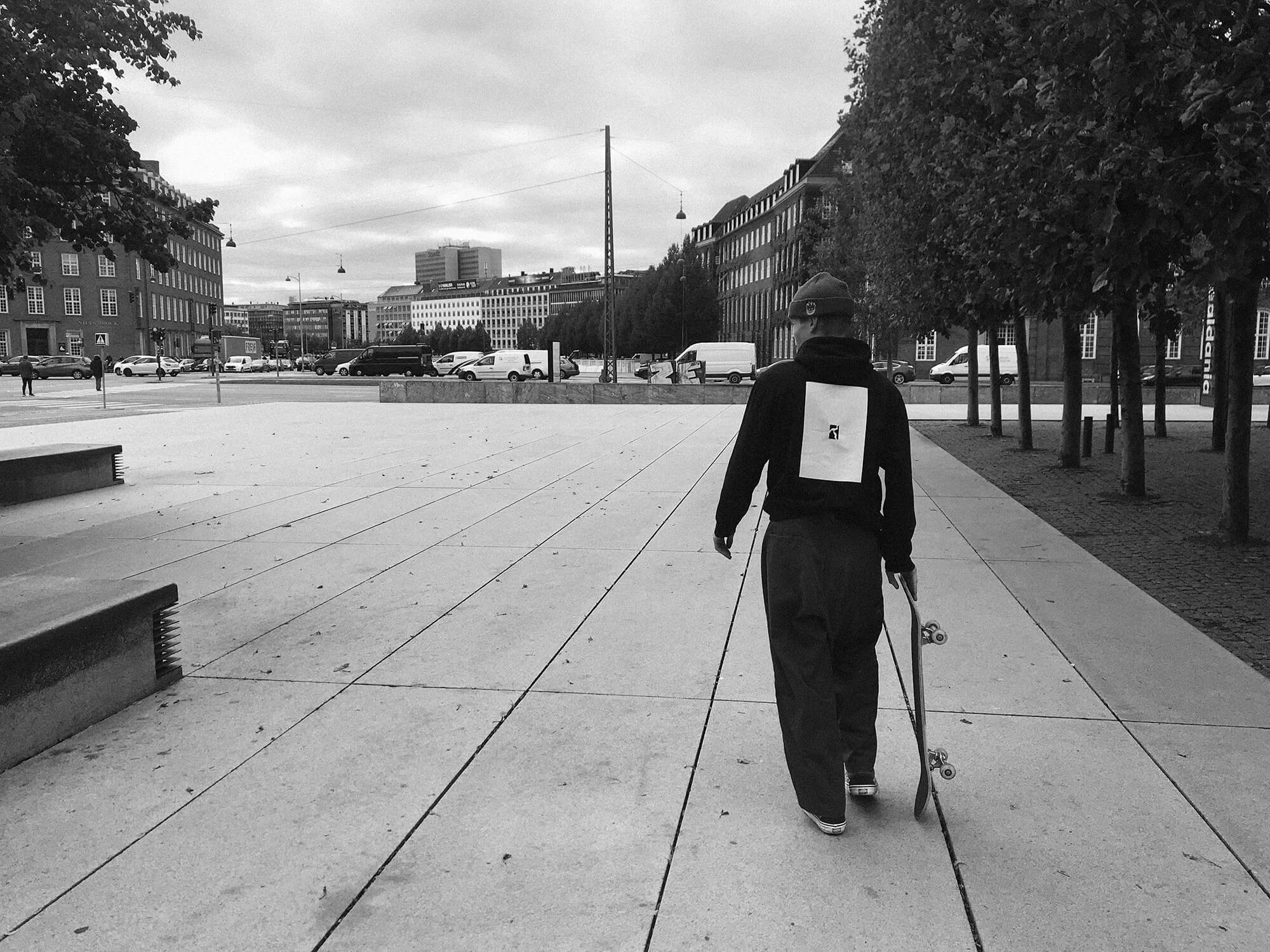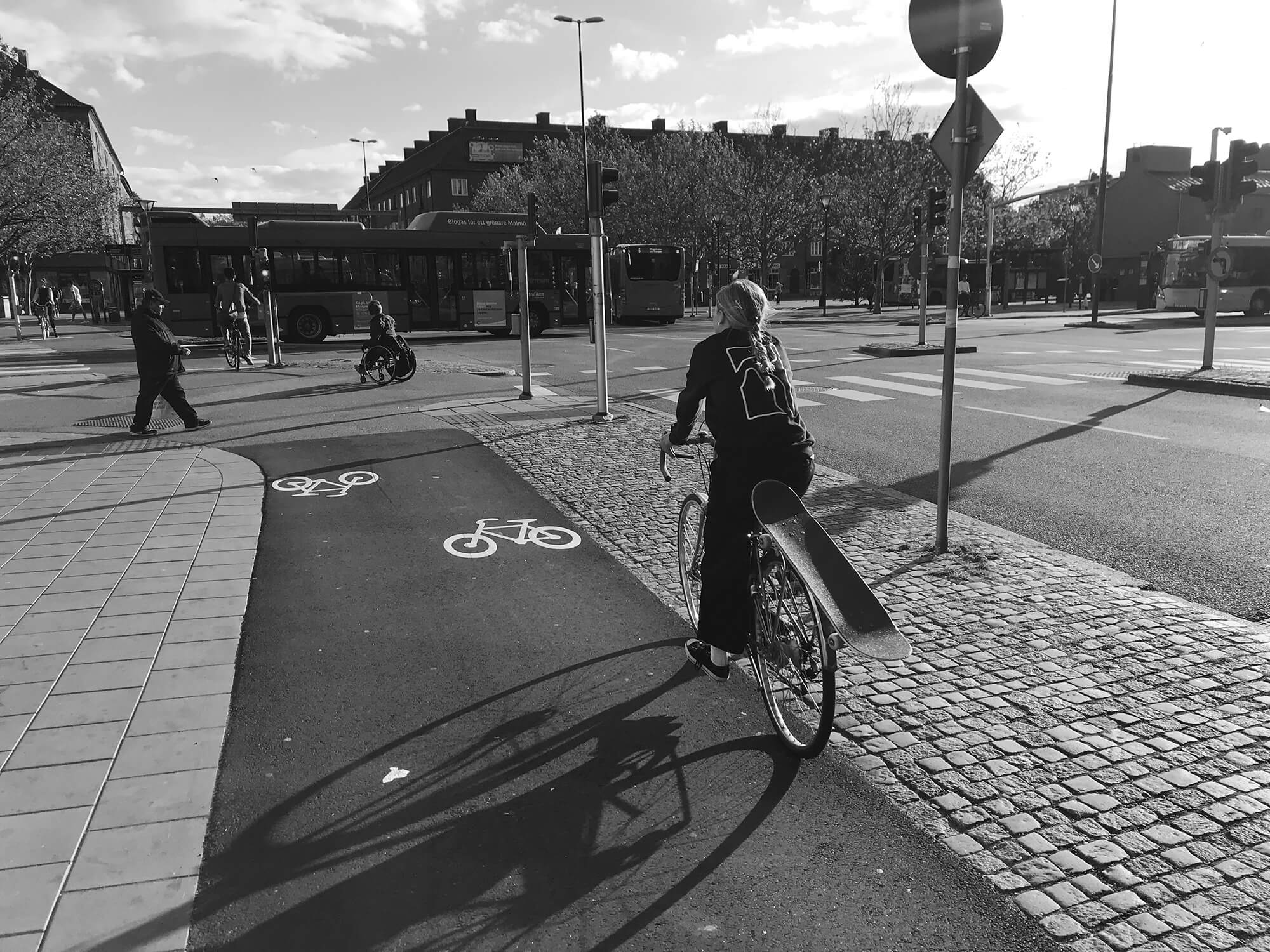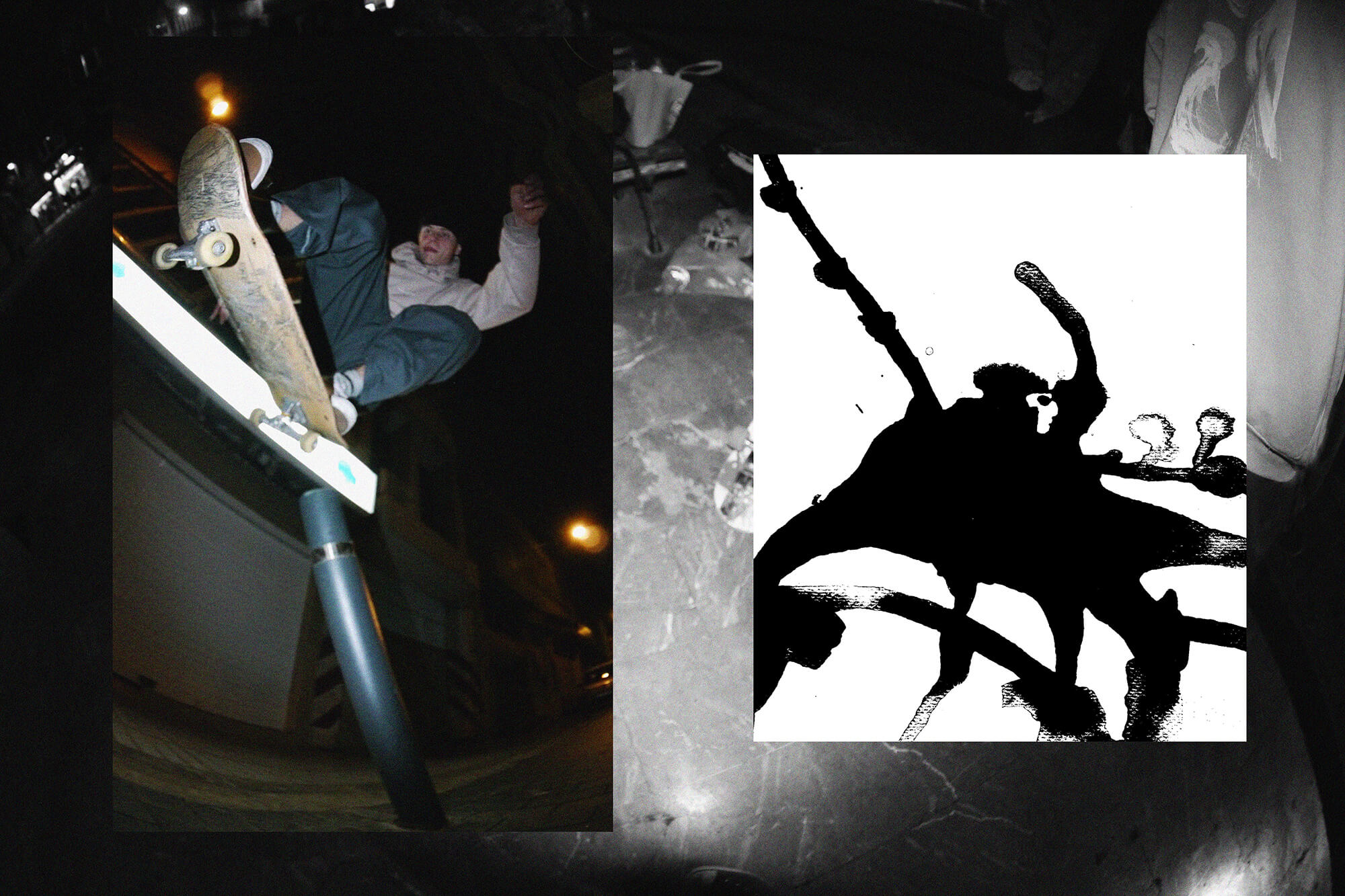Intro & Interview by Adam Abada
Photos by Tom Botwid
What “is” skateboarding? A seven-ply piece of maple? Thirty-three inches of length and no more? “Not a crime?”
Just as skateboarding often eludes definition — existing in a purgatory between physical expression and existential thought — poetry uses language to access a similar type of feeling and add something new to our shared experience.
The history of skateboarding, though, is far shorter than the history of language. We are just beginning to have a well from which to draw when placing skateboarding in the context of everything else. But what else influences? On the heels of a sort of renaissance of small European board brands, Poetic Collective has begun to ascend much like its spiritual predecessor, Polar, out of Sweden and into a growing perspective on what exactly skateboarding “is.”
How did Poetic Collective start?
I’ve been skating my whole life and then I got into making art. I got accepted to the Art Academy in Berlin and moved there. While I was studying, I was taking in a lot of visual influences from the art history world. I was still so immersed in skateboarding and I wanted to take some of these visual inputs and combine it with skateboarding. So, I started making a few boards and products for the hell of it, and wasn’t really thinking of it as a company. We had an abstract graphic, a few friends bought some and we started filming as a group and made a clip. Gradually, it progressed a little bit until about two years ago, when I focused on making it a brand. It wasn’t planned at all, but happened organically, which I think is always the best way for a good result.
How do you see Poetic Collective fitting into the current small-brand landscape? Why have a brand?
That’s a question I ask myself sometimes!
The door for smaller European brands has now been opened. Being from Malmö and seeing what Pontus did with Polar is very inspiring. Everyone in that first wave of new Euro brands — Polar, Magenta, Palace — they’re kind of the O.Gs for me. I get a good feeling out of it and want to do it, so that’s the starting point for me. And then if I can contribute a little bit to the culture and if people are reacting to that — then great.
“You make something, critique it, take the good stuff, and move it forward into the next project.”
That’s some heavy company in terms of influences. How do you see Poetic expanding on the growing legacy of those brands?
I feel like a lot of those brands are run by an elder generation of skateboarders. A lot of the inspiration comes from within skateboarding. I felt like there’s a lot of input from art and art history that can be brought into skateboarding in a way that’s not “Skateboarding Art,” but actually referencing the fine art world.
At the same time, I don’t think that Poetic is a completely new thing. I’m not even sure it’s possible to be that. I had a professor at the Art Academy who said if you can take something that exists and change it even just 1% to add something new, then you’re making something worthwhile and I think there’s something to that.
How do you incorporate your art studies, views, or practices into Poetic?
A large part of what you learn when studying art is how to drive a process to keep it progressing and to get to the next step. You make something, critique it, take the good stuff, and move it forward into the next project.
The artistic process is something that I use a lot in developing the brand. How do the graphics get transferred into the video and how does the skating relate to the graphics? Skateboarding is obviously a lot younger than Fine Art but there are comparisons. In the beginning, Fine Art was about performance: can you make a photorealistic painting? If you were working for a king or somebody, you had to capture them exactly; everybody got really good at doing that. Once people figured that out, they started doing other things. Like, say, expressionism — maybe someone is just throwing paint around — that expresses identity and something else that isn’t entirely about performance. It is another way of showing identity. I try to think about that. Sometimes, it’s just thinking about something you don’t normally think about to get a new perspective.
“I always try to think that in order for someone to really like something, someone else has to hate it too.”
How have the shorter edits and videos engaged in that process to get to the full-length?
Making a lot of work is essential to move forward. We started doing smaller edits from going on trips, and through the process of developing a project, you bring the successes onto the next one and begin to refine your process. Fluid was also about giving the team the possibility to engage individually in a similar process: to give them time to refine exactly what they want to put in the video, and have the video part really represent their identity. It all builds on itself.
What about Fluid do you think represents the identity of the brand?
I wanted to show that we are actually a good group of friends who hang out together and support each other — we’re not just all over the world doing our own things. It was important to show the diversity of our group that consists of both men and women. A lot of time, girls are divided from skateboarding into their own section in all-girls videos or a separate group. That’s great, but I also think that skateboarding is about being together, and that ideally age and gender shouldn’t matter. I want to show that we all support each other, and it’s a process that everyone is a part of.
In poetry, often the repetition of form or breaking down of repetition of form creates a style and rhythm with words. How do you think you access that idea, and why invite that pretension into skateboarding?
If you want to draw a comparison between skating and poetry — I think that’s pretty easy. You work on something that’s essentially very short for a long time, to be able to express the maximum amount you can in that short time.
With Poetic, I think there’s a sense of that poetry in the aesthetics and the way we’re telling the story of our skateboarding — a lot of people will probably think its super pretentious! It’s all good, though. I always try to think that in order for someone to really like something, someone else has to hate it too. It just means that it provokes an opinion, which can be hard in these times when we get so much visual input that most of it just passes unnoticed.
“It’s important for skateboarding to feel of the time and not just nostalgic.”
I would say your team has a pretty solid mix of classic street skateboarding and more contemporary, “trendy” styles…
That goes back to changing 1% to try and make something original. We have no ambition to try and reinvent skateboarding, but for me, I’m sparked when I’m taken off-guard by something. It can be anything: the style, the trick, the spot, the clothing, the coping, anything. There is something being said when someone skates. I like that you say “contemporary,” because I think it’s important for skateboarding to feel of the time and not just nostalgic.
Simon’s part represents that idea pretty well. What about his skating gets you hyped to share with others?
Simon’s skating is really interesting in that way because it contains a lot of classic street skating but there’s also a mix of things in there. There’s a big variety there. I’m proud because he’s been with me since day one. I’ve seen his skating develop and him develop as a person.
I think a year ago, he was on the Quartersnacks Top 10 as “Some Swedish Guy” when he did a backtail Lotti spin. He started referring to that trick as “Some Swedish Guy.” He did that switch heel Lotti spin at the end of the video, which is essentially an updated version of that. So to see him go through even just that transition is cool and I think he’s carving out a strong identity in skateboarding — a lot of people can perform very well, but to have an identity is hard.
Skateboarding can kind of be anything you want, sort of like poetry. What to you is poetic about skateboarding?
It is what you make of it, like poetry. It’s not any one thing anymore. You can take it in any direction you want — sports, the Olympics — or you can do something completely different.
I’m always interested in the people at the forefront of anything, whether it’s Nyjah or Gou Miyagi. They’re pushing it on different levels and have strong identities with what they do. I think skateboarding is interesting when people have a sense of identity that expresses who they are. It’s back to that refinement process — to apply that to something physical where you’re moving in the world. That’s very cool to me.
You and I can do the same trick and it will be a completely different thing based on what you’re bringing to it. We pick these tricks and these spots to do them on and you put together a whole thing. Whether you’re thinking about it or not, that’s expressing something very unique about you.
Last words?
This wouldn’t have been possible without the whole team and especially Markus Bengtsson, who filmed the majority of Simon’s part. Thanks to him and everyone else who was involved!
Fluid will be online soon.



